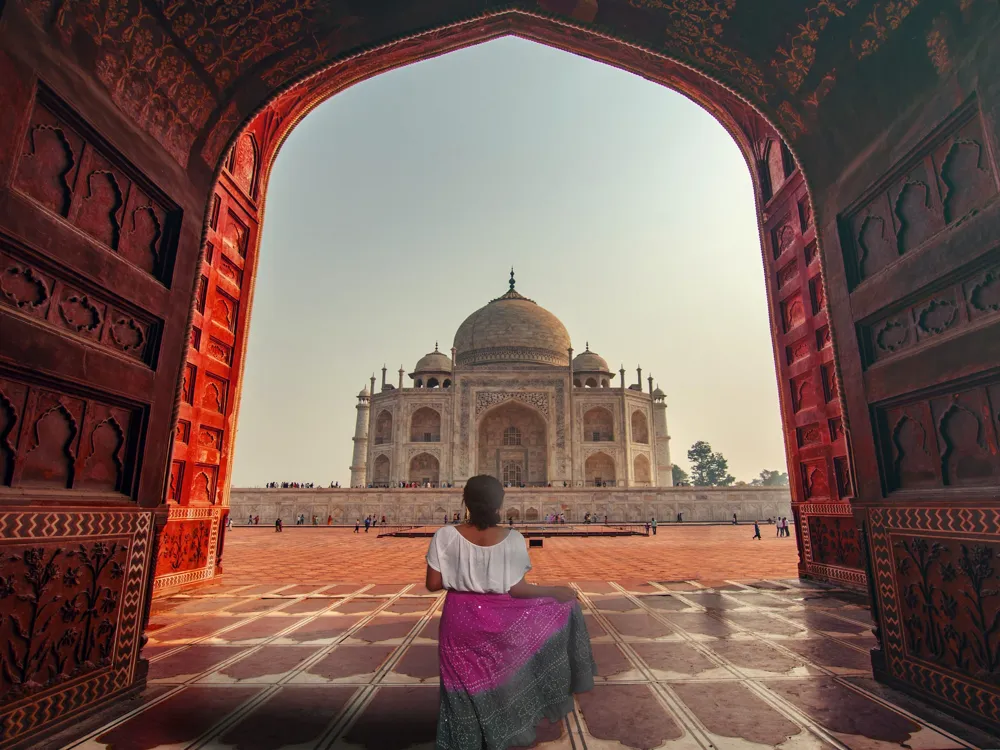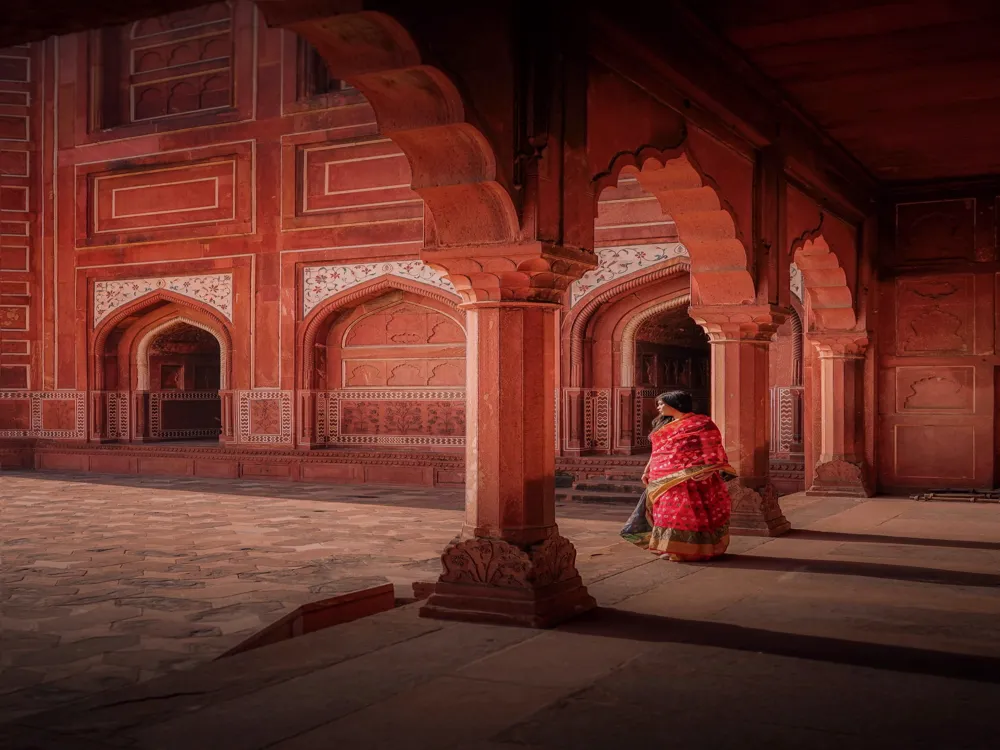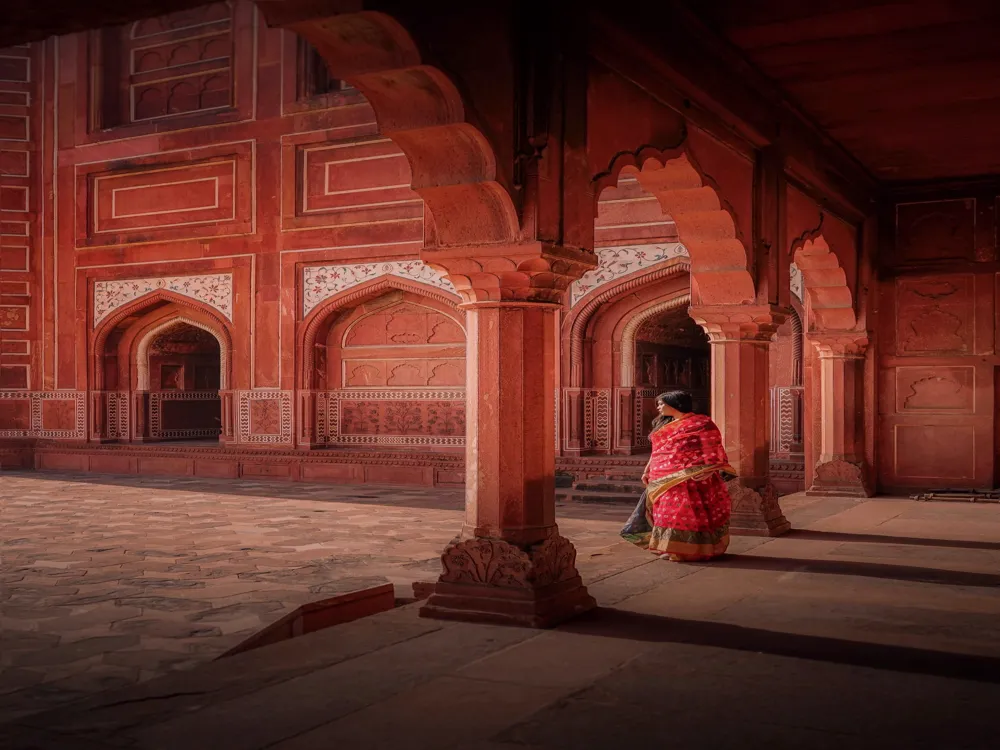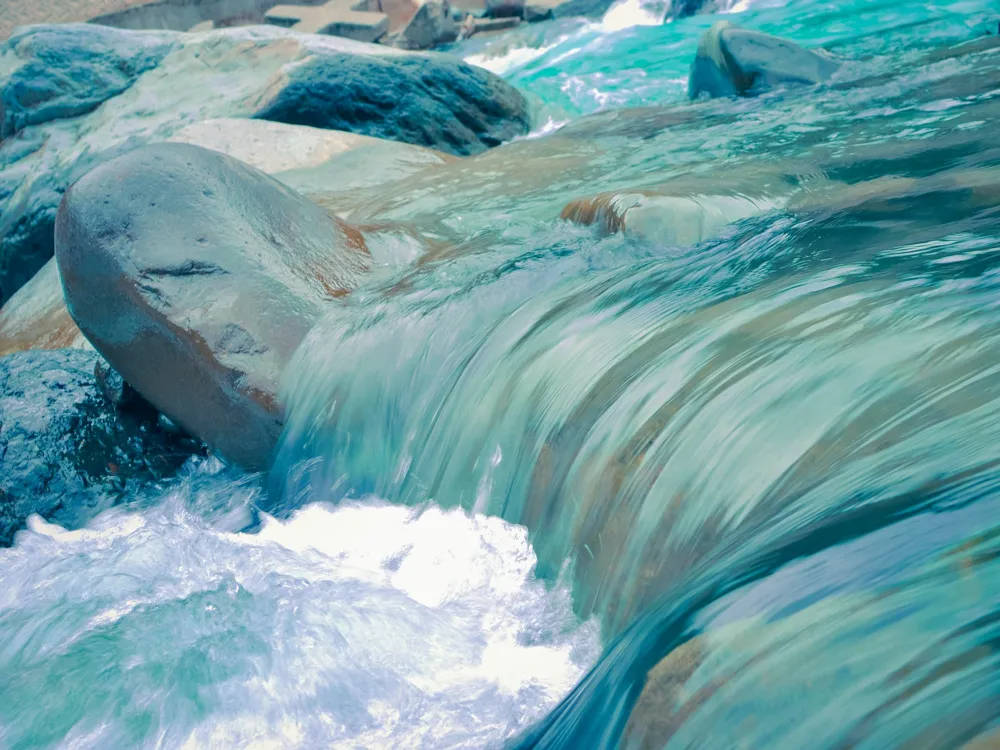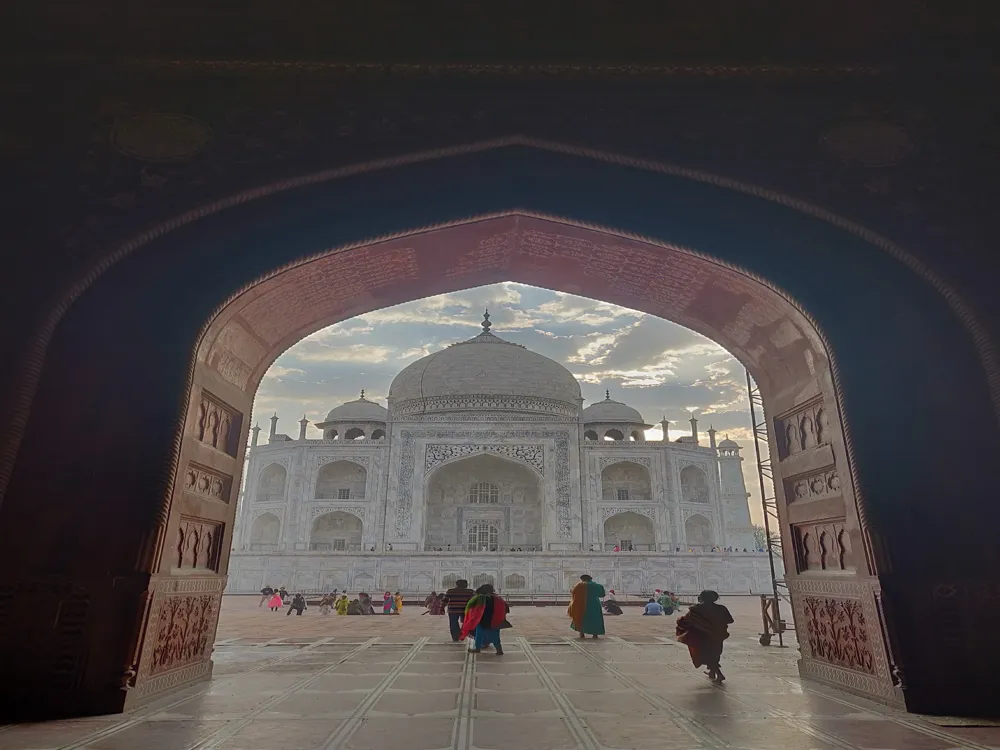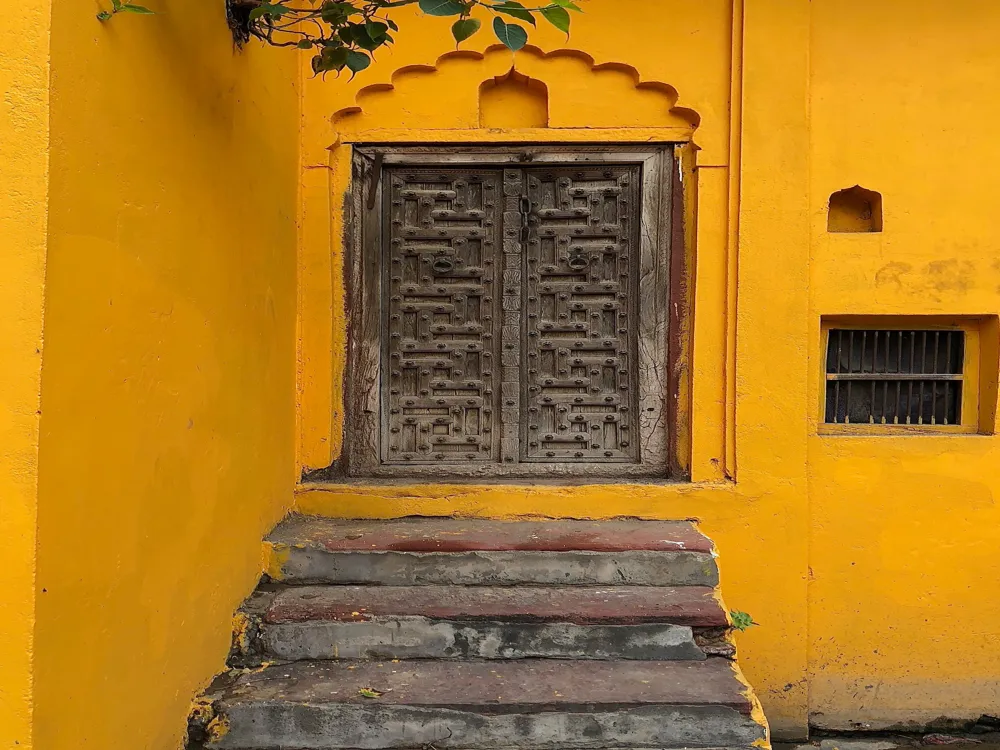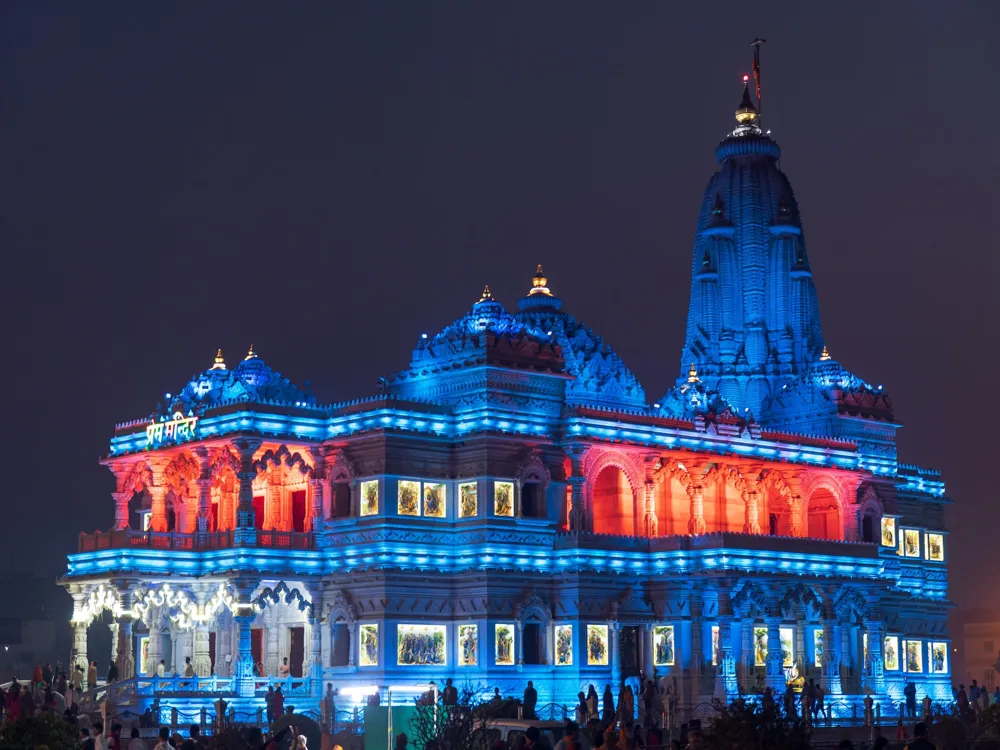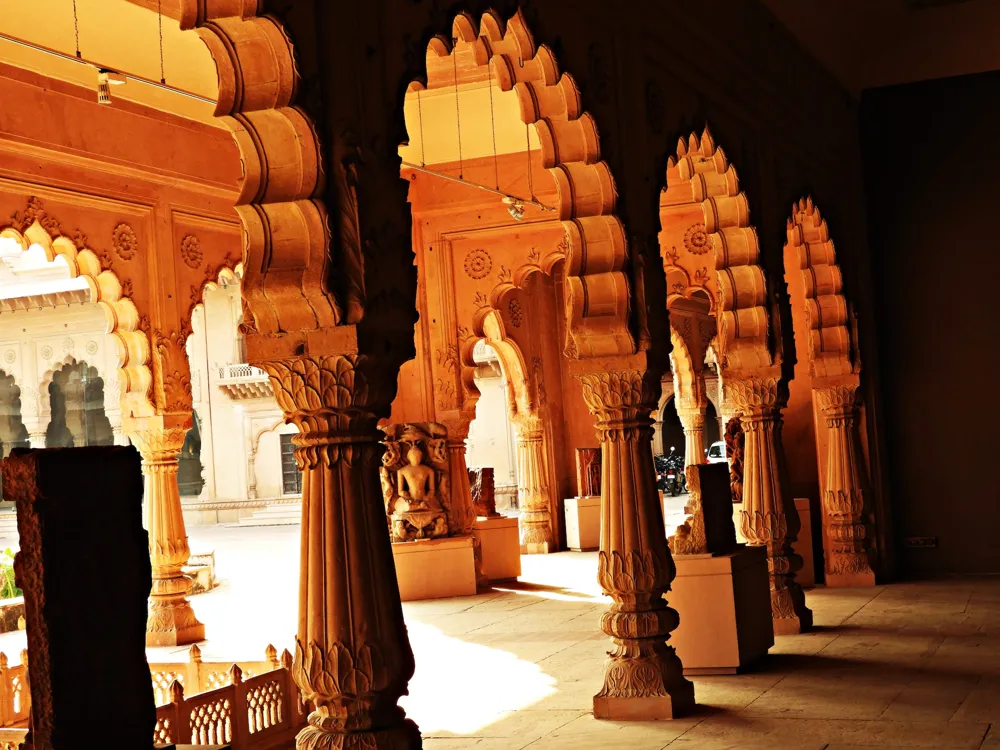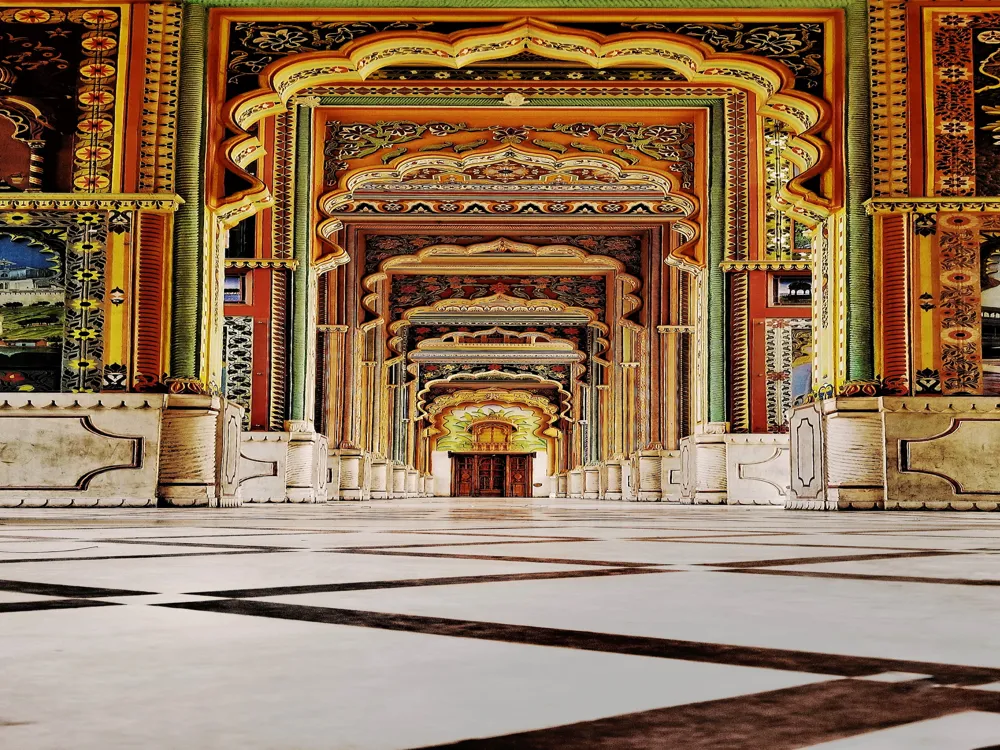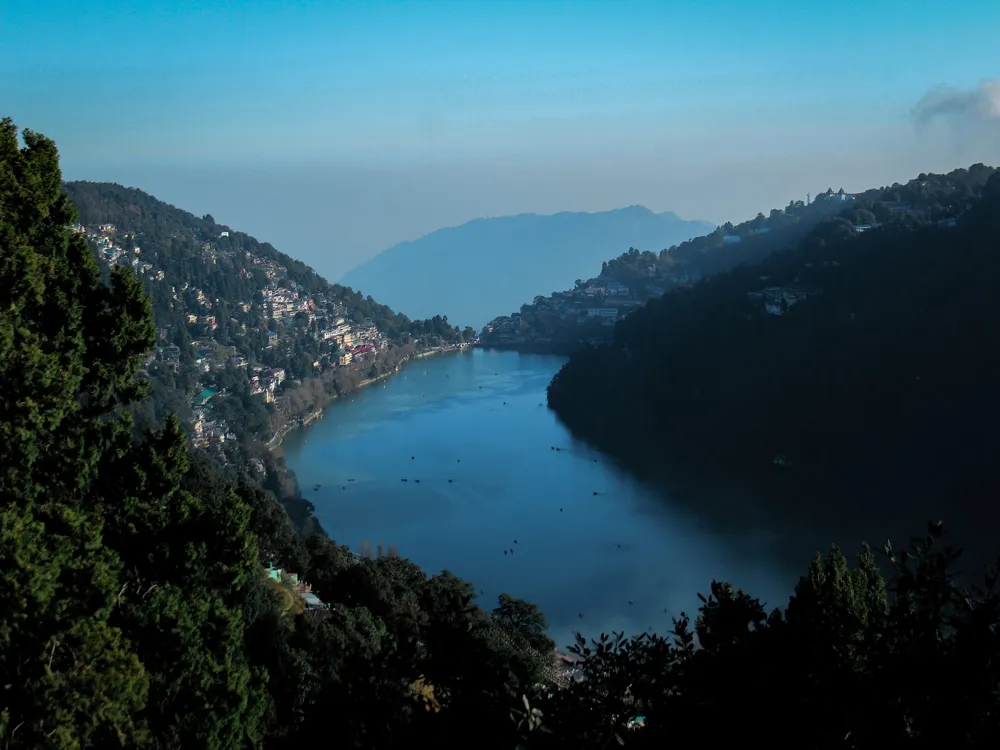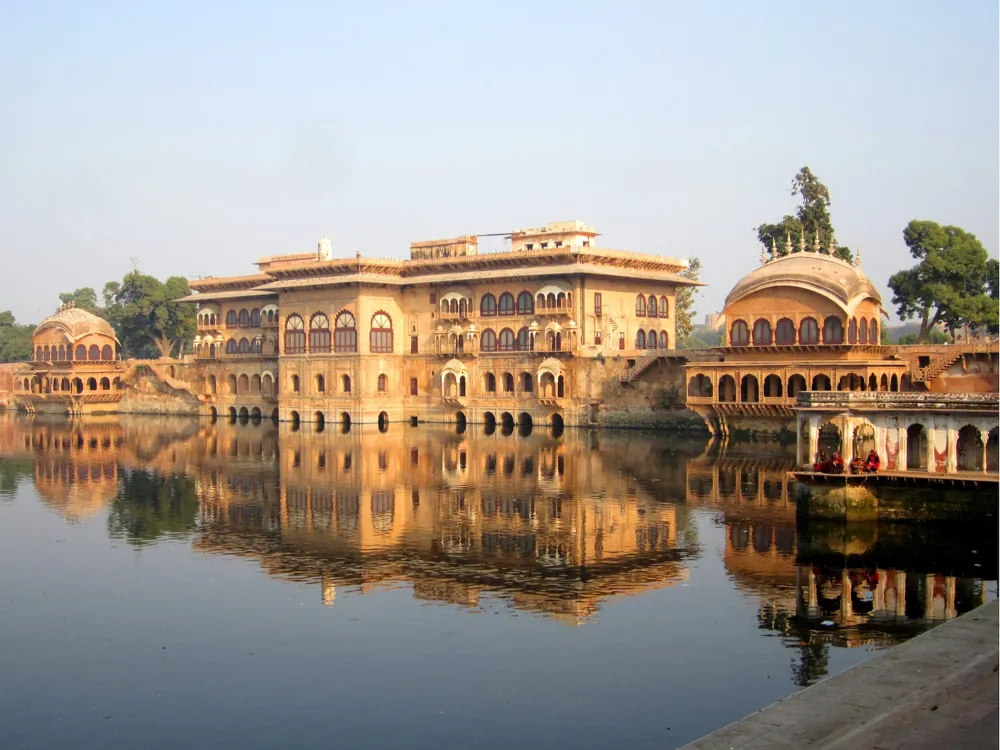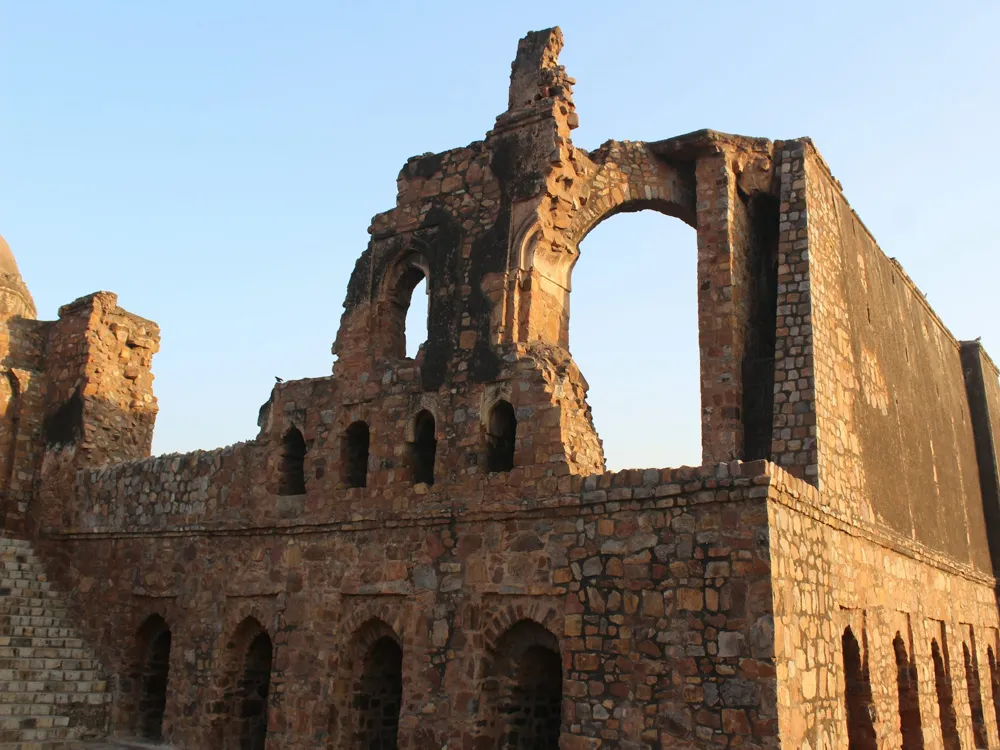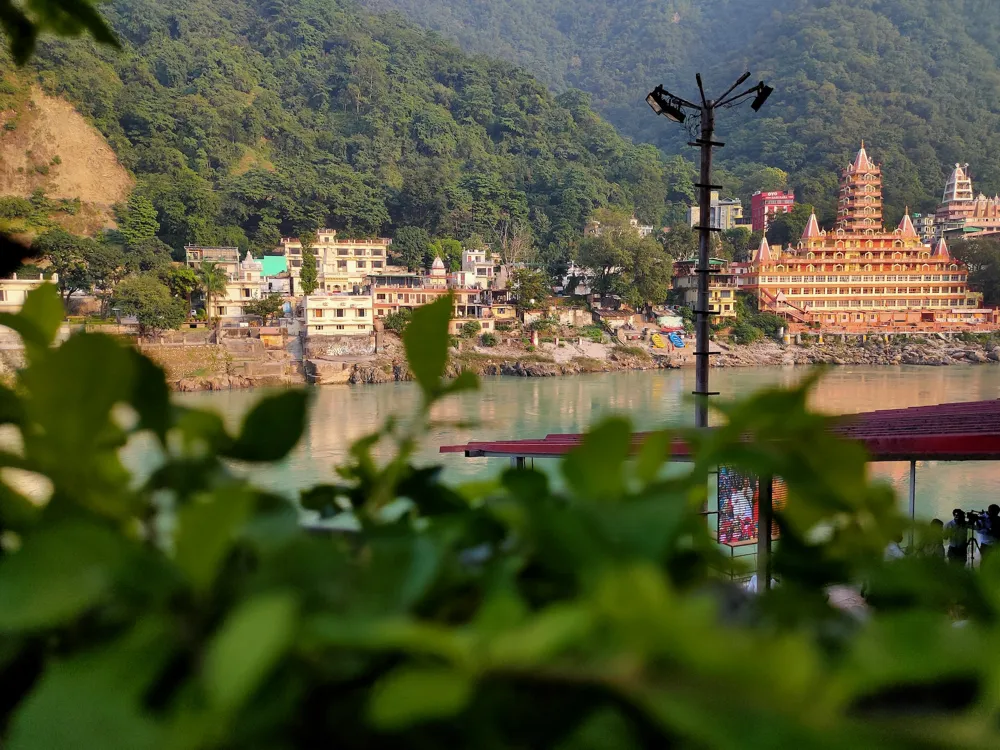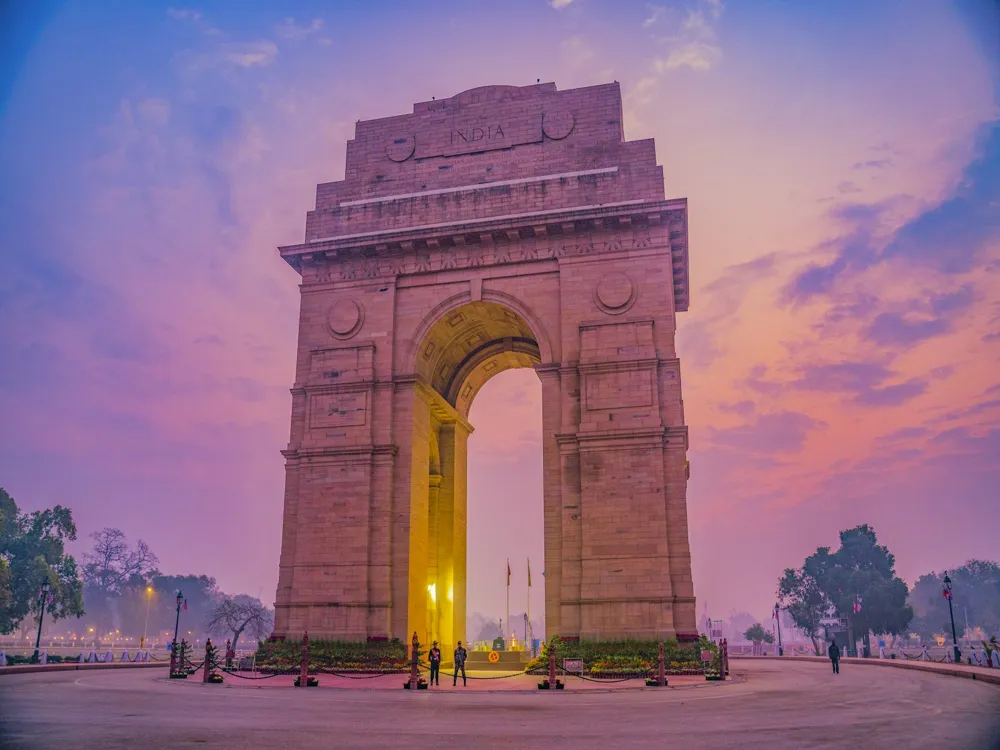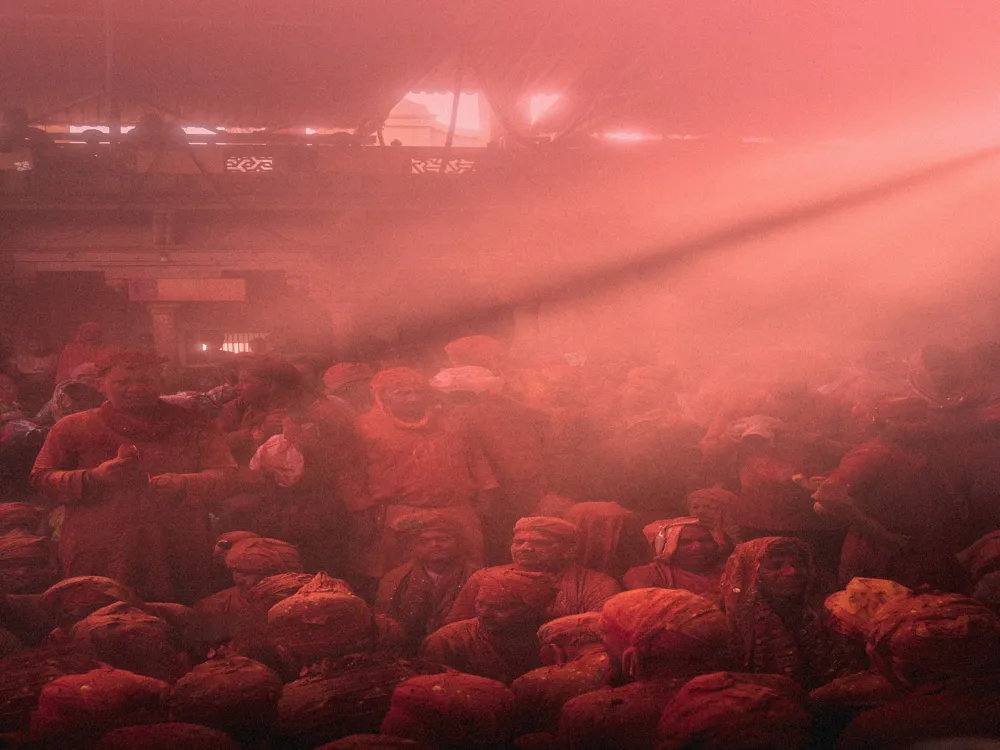The Taj Mahal, a jewel of India's artistic heritage, stands majestically on the banks of the Yamuna River in Agra, Uttar Pradesh. Erected by the Mughal Emperor Shah Jahan in memory of his cherished woman,Mumtaz Mahal, the hall is a symbol of love and an architectural phenomenon. The construction began around 1632 and was completed in 1653, employing thousands of crafters and craftsmen. This UNESCO World Heritage Site attracts millions of visitors each year, drawn to its stirring beauty and literal significance. The ideal time to visit the Taj Mahal is from November to February, when the weather is mild and pleasant. Early mornings are particularly magical, as the rising sun casts a soft glow on the marble. Buy tickets online or at the counter. There are separate queues for foreign and domestic tourists. Remember to carry ID proof. Visitors are advised to dress modestly. Shoes must be removed or covered with shoe covers before entering the main mausoleum. Photography is allowed, but tripods and drones are prohibited. The best photo opportunities are from the garden, especially the central pool. Facilities like restrooms, water stations, and first aid are available. Guided tours can enhance your experience. Agra is well connected by road, rail, and air. The nearest field is Agra Airport. For train trippers , Agra Cantt is the main station. From the station or field, you can hire hacks or bus cabs to reach the Taj Mahal. Motorcars are also available in major metropolises like Delhi and Jaipur. Read More:Overview of the Taj Mahal in Agra, Uttar Pradesh
The Taj Mahal complex is an ensemble of structures including a grand gateway, theater , synagogue , guesthouse, and the main tomb. The harmony and perfection of the armature produce a harmonious balance, typical of Mughal design. The main structure is erected of white marble that reflects tinges of pink and golden with the rising and setting sun. Intricate inlay work with precious andsemi-precious monuments adorns the marble, showcasing the exquisite artifice. The girding auditoriums , grounded on the Persian conception of paradise auditoriums , add to the serenity and ethereal beauty of the Taj Mahal.
The history of the Taj Mahal is as alluring as the monument itself. It's not just a testament to Shah Jahan's love for Mumtaz Mahal but also a reflection of the period's artistic, political, and architectural advancements. This monumental labour of love stands as a testament to the rich history of India and continues to be a source of alleviation and admiration for all who visit. Architecture of the Taj Mahal
The architectural splendour of the Taj Mahal is a perfect mix of Persian, Islamic, and Indian styles. The main structure, a large white marble plaque, is the most recognizable point, emblematizing the vault of heaven. The pate is outgunned with a bejewelled finial that mixes traditional Persian and Hindustani ornamental rudiments. The main plate is girdled by four lower domed chattris, adding a three-dimensional effect to the structure. These chapters are also seen on the corners of the platform, enhancing the architectural balance.
The minarets, each more than 40 metres altitudinous, frame the grave on all four corners. Their design features a pronounced taper, which is allowed to produce an optic vision of height. The surface decorations are among the finest in Mughal armature. The calligraphy of Quranic verses, intricate lapidary inlay, and detailed relief work beautify the facade. Outside, the landmarks of Mumtaz Mahal and Shah Jahan are placed in a central chamber, girdled by a finely sculpted marble screen. This chamber demonstrates the zenith of Mughal ornamental trades, featuring complex inlay work and detailed geometric and flowery motifs.
The layout of the Taj Mahal complex symbolises paradise, as described in the Quran. The theater is divided into four equal corridors, each representing the four gutters of paradise. This charbagh theater enhances the heavenly theme of the complex with its impeccably symmetrical planting and reflective water channels. The use of red sandstone and marble in colorful structures, the scrupulous geometric planning, and the overall harmony of the entire complex make the Taj Mahal not just a wonder in terms of beauty but also in terms of architectural perfection and design.Tips for Visiting the Taj Mahal
Best Time to Visit
Ticketing and Entry
Dress Code and Etiquette
Photography Tips
Facilities and Services
How to Reach the Taj Mahal
Taj Mahal
Agra
Uttar Pradesh
₹ 8,000 onwards
View agra Packages
Weather :
Tags : Forts & Palaces
Timings : Opens 30 minutes before sunrise and closes 30 minutes after sunset
Closed on Friday
Every Friday Taj Mahal is only accessible to practising Muslims to attend the prayers in the afternoon
Time Required : 2 hours
Entry Fee : Indian Citizens and Visitors from SAARC countries: INR 50
Citizens of SAARC and BIMSTEC Countries: INR 540
Foreign Visitors: INR 1100
(Additional INR 200 for every tourist who wishes to enter the mausoleum)
Entry is free for all children below 15 years
Planning a Trip? Ask Your Question
Agra Travel Packages
View All Packages For Agra
Top Hotel Collections for Agra

Private Pool

Luxury Hotels

5-Star Hotels

Pet Friendly
Top Hotels Near Agra
Other Top Ranking Places In Agra
View All Places To Visit In agra
Faq on Agra
What is the Taj Mahal in Agra?
The Taj Mahal is a white marble mausoleum located in Agra, India. It is one of the most famous landmarks in the world and is renowned for its stunning architecture and historical significance.
When was the Taj Mahal built?
Construction of the Taj Mahal began in 1632 and was completed in 1653. It took approximately 21 years to build this magnificent structure.
Who built the Taj Mahal?
The Taj Mahal was commissioned by the Mughal emperor Shah Jahan in memory of his beloved wife, Mumtaz Mahal, who died during childbirth.
Why was the Taj Mahal built?
The Taj Mahal was built as a mausoleum to house the tomb of Mumtaz Mahal and to serve as a symbol of everlasting love and devotion.
How tall is the Taj Mahal?
The main dome of the Taj Mahal stands approximately 73 meters (240 feet) tall, making it one of the tallest structures in the world built entirely of marble.
View agra Packages
Weather :
Tags : Forts & Palaces
Timings : Opens 30 minutes before sunrise and closes 30 minutes after sunset
Closed on Friday
Every Friday Taj Mahal is only accessible to practising Muslims to attend the prayers in the afternoon
Time Required : 2 hours
Entry Fee : Indian Citizens and Visitors from SAARC countries: INR 50
Citizens of SAARC and BIMSTEC Countries: INR 540
Foreign Visitors: INR 1100
(Additional INR 200 for every tourist who wishes to enter the mausoleum)
Entry is free for all children below 15 years
Planning a Trip? Ask Your Question
Agra Travel Packages
View All Packages For Agra
Top Hotel Collections for Agra

Private Pool

Luxury Hotels

5-Star Hotels

Pet Friendly
Top Hotels Near Agra
Other Top Ranking Places In Agra
View All Places To Visit In agraFaq on Agra
What is the Taj Mahal in Agra?
The Taj Mahal is a white marble mausoleum located in Agra, India. It is one of the most famous landmarks in the world and is renowned for its stunning architecture and historical significance.
When was the Taj Mahal built?
Construction of the Taj Mahal began in 1632 and was completed in 1653. It took approximately 21 years to build this magnificent structure.
Who built the Taj Mahal?
The Taj Mahal was commissioned by the Mughal emperor Shah Jahan in memory of his beloved wife, Mumtaz Mahal, who died during childbirth.
Why was the Taj Mahal built?
The Taj Mahal was built as a mausoleum to house the tomb of Mumtaz Mahal and to serve as a symbol of everlasting love and devotion.
How tall is the Taj Mahal?
The main dome of the Taj Mahal stands approximately 73 meters (240 feet) tall, making it one of the tallest structures in the world built entirely of marble.





